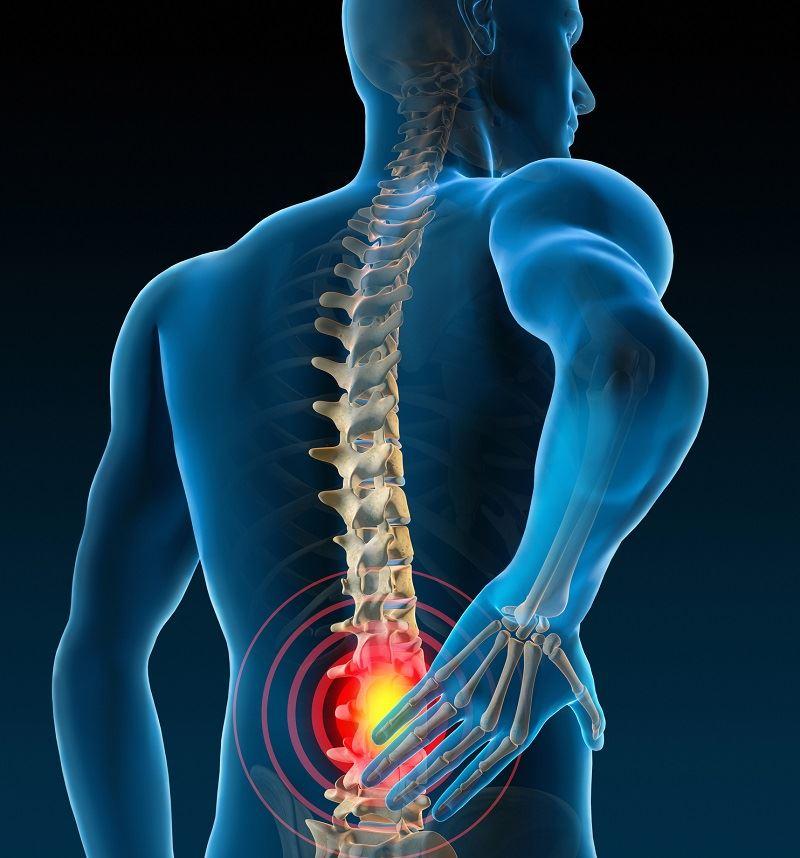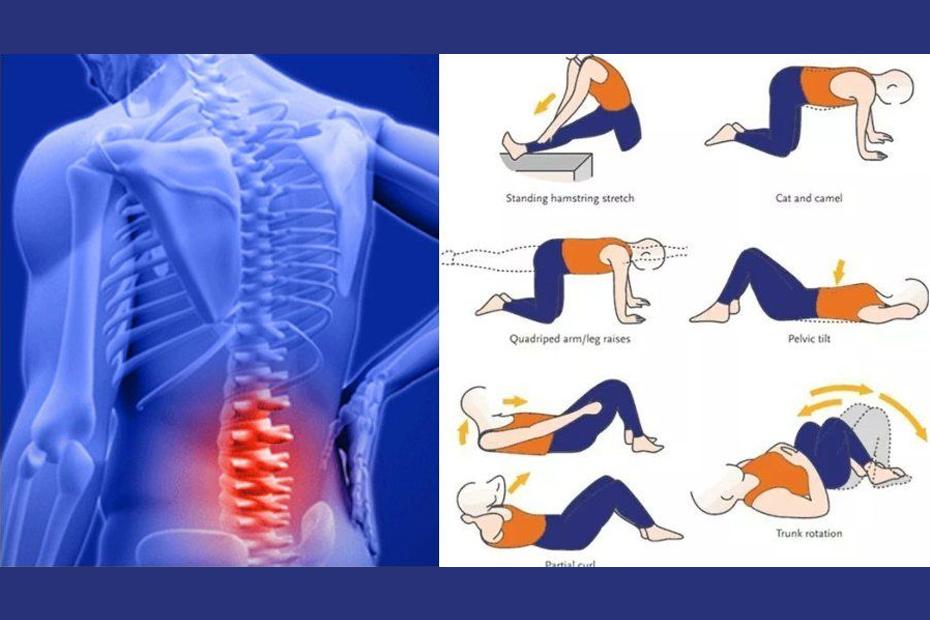Unlocking Comfort: A Journey Through Back Pain Relief
Back pain is an unwelcome companion for many, manifesting as a dull ache or a sharp reminder of our body’s fragility. It can interrupt daily activities, cloud our focus, and diminish our quality of life. Yet, nestled within this discomfort lies a path toward relief, a journey that many have embarked upon and successfully navigated. In this article, we’ll explore a variety of strategies and insights that can help alleviate back pain, from simple stretches and ergonomic adjustments to alternative therapies and medical interventions. By understanding the underlying causes and harnessing effective techniques, we can reclaim our comfort and restore our vitality, one step at a time. Whether you are a chronic sufferer or an occasional victim of this common ailment, join us as we uncover the keys to unlocking a more pain-free existence.
Understanding the Causes of Back Pain for Effective Relief
Back pain can often be attributed to a variety of factors, each contributing to discomfort in unique ways. Muscle strains and ligament sprains are among the most common culprits, often resulting from improper lifting techniques or sudden awkward movements. Other potential causes include herniated discs, which can press on nerves and lead to significant pain, and arthritis, which may cause inflammation in the joints of the spine. Lifestyle choices, such as lack of physical activity or poor posture, can exacerbate these issues, leading to chronic pain and discomfort.
Understanding the root causes of back pain is essential for implementing effective relief strategies. Key factors include:
- Inactivity: A sedentary lifestyle can weaken muscles, making them more susceptible to injury.
- Obesity: Excess weight adds strain to the spine, increasing the risk of pain.
- Improper ergonomics: Poorly designed workspaces can lead to bad posture and increased discomfort.
- Stress: Emotional tension can manifest physically, leading to muscle tightness and pain.
By addressing these causes, individuals can create tailored approaches to alleviate back pain. A simple table summarizing some common causes and potential relief strategies is provided below:
| Cause | Potential Relief Strategies |
|---|---|
| Muscle Strains | Rest, ice therapy, gentle stretching |
| Poor Posture | Ergonomic adjustments, posture training |
| Obesity | Weight management, fitness programs |
| Stress | Meditation, relaxation techniques |
Exploring Alternative Therapies: Acupuncture and Chiropractic Care
As the pursuit of holistic health continues to gain momentum, many individuals are turning to therapies such as acupuncture and chiropractic care for back pain relief. Acupuncture, an ancient practice rooted in Traditional Chinese Medicine, involves the insertion of thin needles into specific points along the body’s meridians. This process is believed to stimulate the body’s natural healing mechanisms, promote blood flow, and alleviate pain. Numerous studies suggest that acupuncture can be particularly effective for chronic back pain, providing a non-invasive alternative that may reduce reliance on pharmaceuticals.
On the other hand, chiropractic care focuses on the musculoskeletal system, particularly the spine. Chiropractors employ spinal adjustments and manual manipulation techniques to address misalignments that may contribute to discomfort. This treatment is designed to restore proper function, improve mobility, and enhance overall well-being. Many patients report significant improvements in back pain after a series of chiropractic sessions, often experiencing enhanced range of motion and reduced stiffness. Together, these therapies provide complementary approaches to pain management, allowing individuals to explore tailored solutions that align with their health goals.
The Role of Exercise in Strengthening Your Back
Engaging in regular physical activity is paramount for enhancing back strength and resilience. Strengthening your back through targeted exercises can alleviate discomfort and reduce the risk of future injuries. Incorporating a variety of movements into your routine can yield comprehensive benefits. Consider the following exercise categories:
- Core Strengthening: Planks, bridges, and abdominal exercises stabilize the spine.
- Flexibility Training: Yoga and stretching help maintain a healthy range of motion.
- Resistance Training: Weightlifting or resistance bands build muscle strength around the spine.
To track your progress effectively, you might consider a simple table outlining key exercises and their respective benefits. This approach not only keeps your routine varied but also reinforces your commitment to back health.
| Exercise | Benefit |
|---|---|
| Deadlifts | Strengthens the entire back and legs. |
| Supermans | Enhances lower back strength. |
| Bird-Dogs | Improves core stability and balance. |
Ergonomics at Home and Work: Creating a Pain-Free Environment
Creating a comfortable and supportive environment is essential for preventing and alleviating back pain, both at home and in the workplace. Start by assessing your workspace setup to ensure it promotes good posture. Here are some critical elements to consider:
- Chair Height: Your feet should be flat on the floor, with knees at a 90-degree angle.
- Monitor Position: Place your monitor at eye level to avoid straining your neck.
- Keyboard and Mouse: Keep them close enough to prevent reaching too far, which can strain your shoulders.
At home, make small adjustments to your daily routine that can significantly impact your comfort. For instance, when sitting on your couch or bed, use a supportive cushion or lumbar roll to maintain the natural curve of your spine. Additionally, incorporating frequent breaks into your day can work wonders for reducing discomfort:
| Activity | Recommended Duration |
|---|---|
| Standing Break | 5 minutes every hour |
| Stretching | 10 minutes every two hours |
| Short Walk | 15 minutes every four hours |
The Importance of Stretching: Simple Techniques for Daily Relief
Incorporating stretching into your daily routine can significantly alleviate discomfort and improve overall well-being. Stretching not only enhances flexibility but also promotes blood circulation, which is essential for reducing stiffness and tension in the back. Simple techniques can be easily integrated into your day, whether at home, at work, or during a brief break. Consider trying the following techniques to experience immediate relief:
- Cat-Cow Stretch: A gentle flow between two poses that warms up the spine.
- Child’s Pose: A restorative position that stretches the back and hips.
- Seated Forward Bend: This stretch helps to lengthen the spine and release lower back tension.
- Wall Angels: A great way to improve shoulder mobility while stretching the upper back.
To further illustrate the benefits of these stretches, consider the following table outlining the effects of each technique:
| Stretch Technique | Benefits |
|---|---|
| Cat-Cow Stretch | Improves spinal flexibility and relieves tension. |
| Child’s Pose | Calms the mind while stretching the back. |
| Seated Forward Bend | Alleviates lower back strain and promotes relaxation. |
| Wall Angels | Enhances posture and strengthens upper back muscles. |
Nutrition and Hydration: Supporting Your Spine from Within
To ensure your spine remains healthy and resilient, it’s essential to focus on what you put into your body. A balanced diet rich in essential nutrients can significantly impact spinal health. Consider incorporating the following foods into your meals:
- Leafy Greens: Such as kale and spinach, packed with calcium and magnesium.
- Fatty Fish: Like salmon and mackerel, which provide omega-3 fatty acids, known to reduce inflammation.
- Nuts and Seeds: Almonds and chia seeds offer healthy fats and protein for tissue repair.
- Fruits: Berries and oranges are rich in antioxidants and vitamin C, essential for collagen production.
Hydration is equally important for maintaining the health of your spine. Water helps to keep the intervertebral discs lubricated and functioning properly. To stay adequately hydrated, aim for the following:
| Hydration Tips | Benefits |
|---|---|
| Drink at least 8 glasses of water daily | Supports overall spinal health and function |
| Limit caffeine and alcohol intake | Prevents dehydration |
| Include hydrating foods | Fruits and veggies like cucumbers and watermelon |
By prioritizing nutrition and hydration, you can create a strong foundation for your spine, making it more resilient to injury and pain. This holistic approach not only aids in relief but also promotes long-term spinal health.
Q&A
Q&A: Your Guide to Back Pain Relief
Q: What are the common causes of back pain?
A: Back pain can stem from a variety of sources, including poor posture, muscle strain, herniated discs, and even stress. Lifestyle factors like prolonged sitting, weight gain, and lack of exercise can exacerbate these issues, turning a simple twinge into a persistent ache.
Q: How can I know if my back pain is serious?
A: While many cases of back pain are benign, it’s important to pay attention to accompanying symptoms. If you experience severe pain after an injury, numbness, weakness in your legs, or bladder/bowel control issues, it’s wise to consult a healthcare professional for an assessment.
Q: What are some effective home remedies for back pain relief?
A: Several home remedies can offer relief. Applying ice or heat can help reduce inflammation and soothe sore muscles. Gentle stretching, yoga, or low-impact exercises like walking can improve flexibility and strengthen support muscles. Additionally, maintaining a healthy weight can alleviate pressure on your back.
Q: When should I seek professional treatment for back pain?
A: If your pain persists for more than a few weeks, interferes with daily activities, or worsens over time, it’s time to see a professional. A doctor or physical therapist can provide tailored treatments, including medications, physical therapy, or even alternative therapies like acupuncture.
Q: Are there specific exercises that can help with back pain?
A: Yes! Strengthening your core is crucial for supporting your back. Exercises like pelvic tilts, bridges, and gentle stretches can be beneficial. Always remember to listen to your body and avoid any movements that cause pain. Consult a professional for a personalized exercise plan if needed.
Q: Can posture really affect my back pain?
A: Absolutely! Poor posture, whether sitting or standing, can lead to muscle imbalances and strain on the spine. Being mindful of your posture while working at a desk or using your phone can significantly reduce discomfort. Consider ergonomic furniture or tools that promote better alignment.
Q: What lifestyle changes can I make to prevent back pain?
A: A proactive approach is key! Incorporate regular physical activity into your routine, focus on maintaining a healthy weight, and practice good posture. Additionally, try to take breaks to stretch during long periods of sitting or standing to keep your muscles engaged.
Q: Are there any alternative therapies that can help relieve back pain?
A: Yes! Many people find relief through alternative therapies like chiropractic adjustments, acupuncture, or massage therapy. These approaches can help alleviate tension, improve circulation, and promote healing. Always consult with your healthcare provider before starting any new treatment.
Q: Can stress really contribute to back pain?
A: Yes, stress can manifest physically in our bodies, often leading to muscle tension and discomfort, particularly in the back. Practices like mindfulness, meditation, and regular relaxation techniques can help mitigate stress and, in turn, reduce back pain.
Q: What is the most important takeaway for managing back pain?
A: Listen to your body! Understanding when to rest and when to move is crucial in managing back pain. Prevention, through a healthy lifestyle and proper body mechanics, alongside seeking professional advice when needed, can lead to a happier, healthier back.
To Wrap It Up
As we conclude our exploration of back pain relief, it’s essential to remember that each journey to comfort is unique. Whether you choose the path of stretching, strengthening, or integrating holistic practices, the goal remains the same: to reclaim the joy of movement and the freedom to live fully. Take the insights shared here as stepping stones on your personal journey, and don’t hesitate to reach out to healthcare professionals for tailored guidance. With patience and persistence, relief is not just a distant dream but an achievable reality. Here’s to a future where back pain takes a backseat, allowing you to embrace life with renewed vitality and ease.
